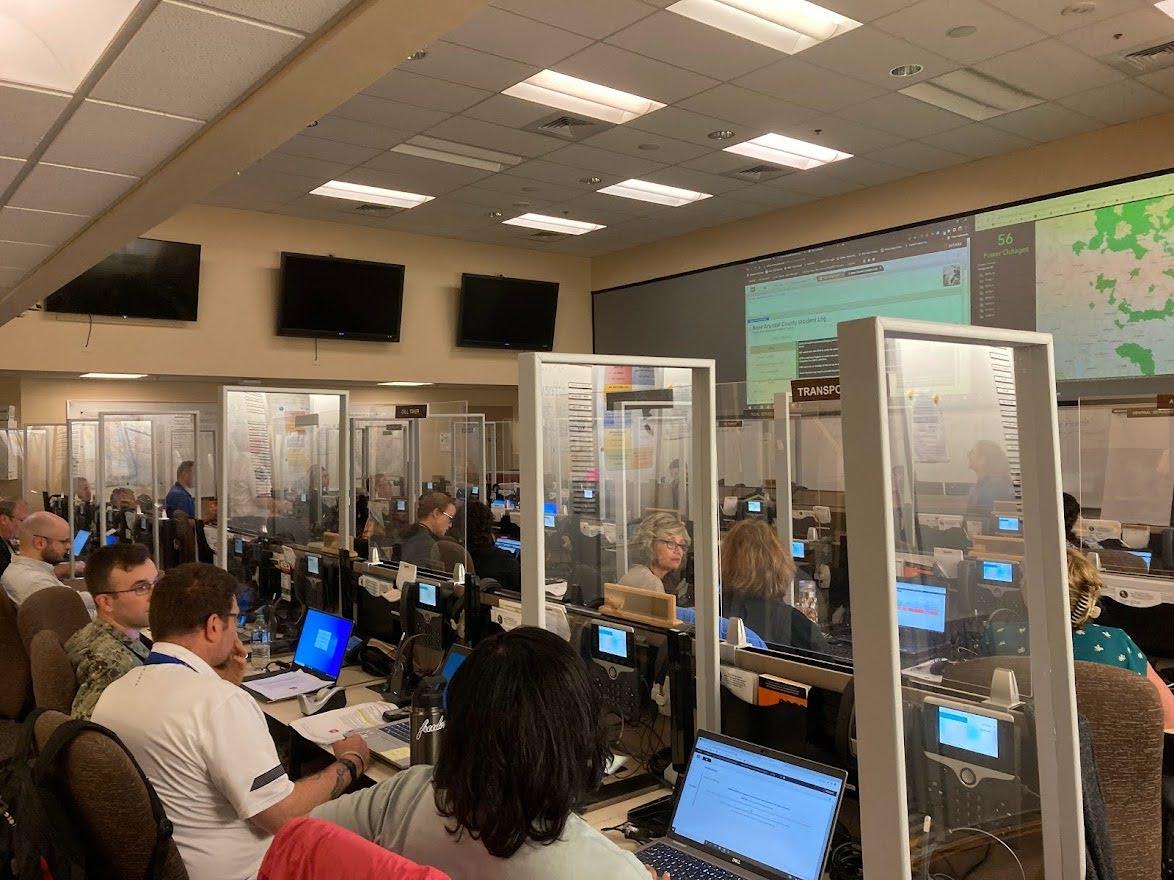
The Anne Arundel County Emergency Operations Center (EOC), overseen by the Office of Emergency Management (OEM), serves as the central hub during crises. It brings together decision-makers, responders, and resources from different agencies to coordinate emergency response efforts. The EOC is where crucial decisions are made to ensure community safety during natural disasters, accidents, or other significant events.
Representatives from various agencies, including the Fire Department, Police Department, Department of Public Works, and others, collaborate to ensure coordination and unity in their efforts to protect and assist the public. They gather, analyze, and share information from different sources to enhance decision-making. Additionally, the EOC assists in allocating resources to support response and recovery efforts efficiently.
Other key components of the EOC include:
- Call Center -Our call center, located within the EOC, is operated by trained volunteers and staff. It acts as a crucial connection between the public and emergency responders during crises. The call center's main role is to serve as a central contact point for the public to report non-emergency situations, request assistance, and get information. Call takers also provide advice on preparedness, community resources, and other relevant information to help people take proactive steps to reduce risks and improve their resilience to emergencies.
- Joint Information Center (JIC) - The JIC is the voice of the emergency response effort. Its main purpose is to manage public information and ensure accurate, consistent, and timely information is shared with the public, media, and other stakeholders during an emergency. The JIC also focuses on public engagement and education, including safety tips, incident instructions, and other essential information to help the public prepare for and respond to emergencies effectively.
- Senior Policy Group - This is where high-level decision-makers, including elected officials and senior executives from various agencies, come together to provide strategic guidance and direction during an emergency. They discuss priorities, allocate resources, and set policy direction to address the evolving situation.
